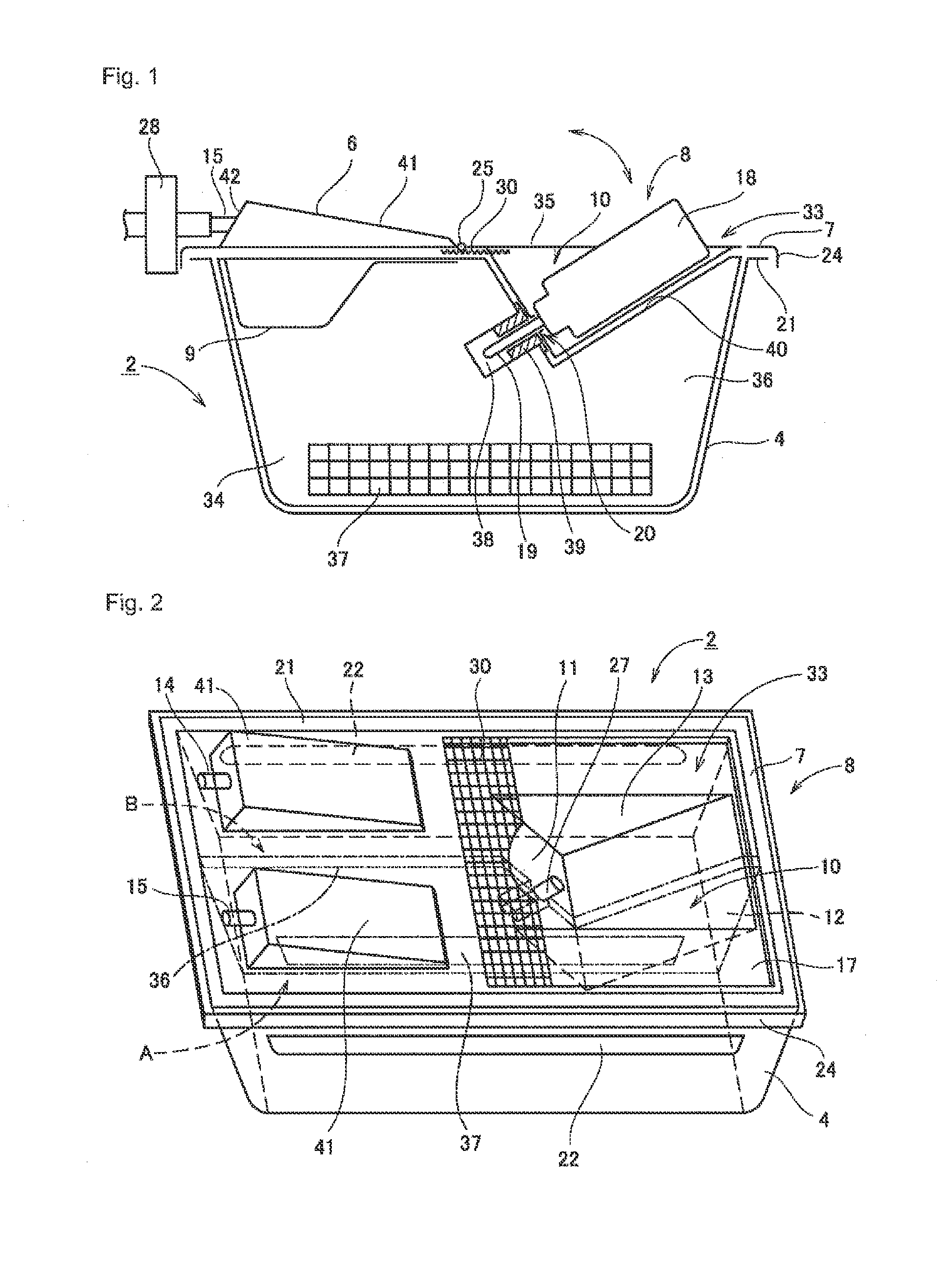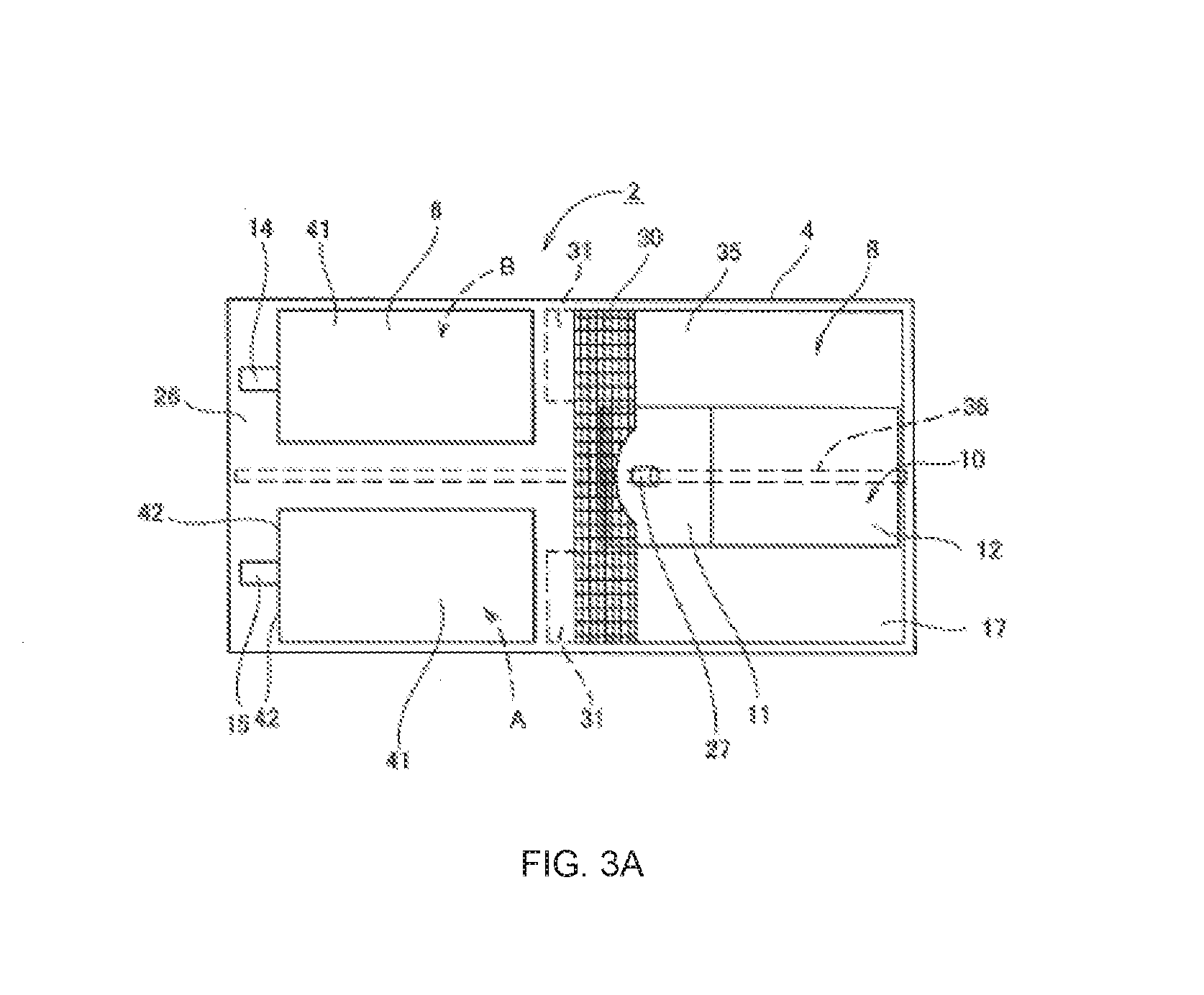Cage for breeding small animals
a cage and small animal technology, applied in the field of cages for breeding small animals, can solve the problems and reducing the number of qualified animals, so as to reduce labor and reduce the cost of facility and maintenance costs for animal testing, the effect of reducing the number of parts
- Summary
- Abstract
- Description
- Claims
- Application Information
AI Technical Summary
Benefits of technology
Problems solved by technology
Method used
Image
Examples
example 1
[0084]As illustrated in FIG. 16, a cage 2 for breeding small animals according to the present invention is mounted in a small animal breeding rack 60 in such a manner that the cage 2 can be inserted and removed through an opening formed on the front side of the rack 60. The rack 60 comprises a rectangular parallelepiped, frame body 61 formed of angles or the like, and a shelf frame 62 for dividing the space of the frame body 61 from top to bottom into a plurality of shelves. A plurality of breeding cages 2 are placed or supported in a suspended manner within a plurality of breeding spaces 63 formed on an upper part of each of the shelf frames 62. Each breeding space 63 has an opening on the front side, and the cage 2 is placed from the opening into the space 63 in such a manner that the cage 2 can be removed from the front.
[0085]As illustrated in FIGS. 1 to 4, the cage 2 comprises: a rectangular parallelepiped, casing 4 with an opening on an upper surface thereof; a lid 6 for coveri...
embodiment 2
[0120]While a partition board 36 is placed within a single casing 4 in the embodiment described above, the casing 4 may be constituted of an outer case 46 and an inner case 43 and a partition board 36 may be placed within the inner case 43.
[0121]In such a case, as illustrated in FIGS. 11 to 13, an engaging protrusion 44 for retaining a partition board 36 is provided at each of both side ends on a bottom portion of the inner case 43. An engaging recess section 45, which can engage with the engaging protrusion 44, is provided at each of both side ends of a bottom portion of the partition board 36. In addition, a protrusion 47 is provided at each of both side ends on a bottom portion of the outer case 46, and the protrusion 47 can engage with a recess portion provided on a bottom surface side of the engaging protrusion 44 of the inner case 43.
[0122]With such a configuration, it becomes possible to attach the partition board 36 easily in a state where the partition board 36 is standing ...
embodiment 3
[0128]FIG. 15 illustrates a still another embodiment of the present invention.
[0129]In the present embodiment, a lid 6 for covering an opening on an upper surface of a casing 4 is attached in an openable and closable fashion to a part of the opening, and a water supply apparatus 8 is attached on a different part of the opening.
[0130]A shaft section 25 is formed at an end portion of the lid 6. A shaft bearing (not shown) is formed at an upper edge in the substantially middle part of the casing 4. The shaft bearing engages with the shaft section 25. The engagement of the shaft section 25 of the lid 6 with the shaft bearing allows the lid 6 to be supported pivotable upward and downward with respect to the lid 6.
[0131]A gripping member 30 is supported in a cantilever fashion with a water supply apparatus 8 located therebelow, and most of the gripping member 30 is placed below the lower surface of the lid 6. When the lid 6 is pivoted upward, the gripping member 30 is exposed from the ope...
PUM
 Login to View More
Login to View More Abstract
Description
Claims
Application Information
 Login to View More
Login to View More - R&D
- Intellectual Property
- Life Sciences
- Materials
- Tech Scout
- Unparalleled Data Quality
- Higher Quality Content
- 60% Fewer Hallucinations
Browse by: Latest US Patents, China's latest patents, Technical Efficacy Thesaurus, Application Domain, Technology Topic, Popular Technical Reports.
© 2025 PatSnap. All rights reserved.Legal|Privacy policy|Modern Slavery Act Transparency Statement|Sitemap|About US| Contact US: help@patsnap.com



